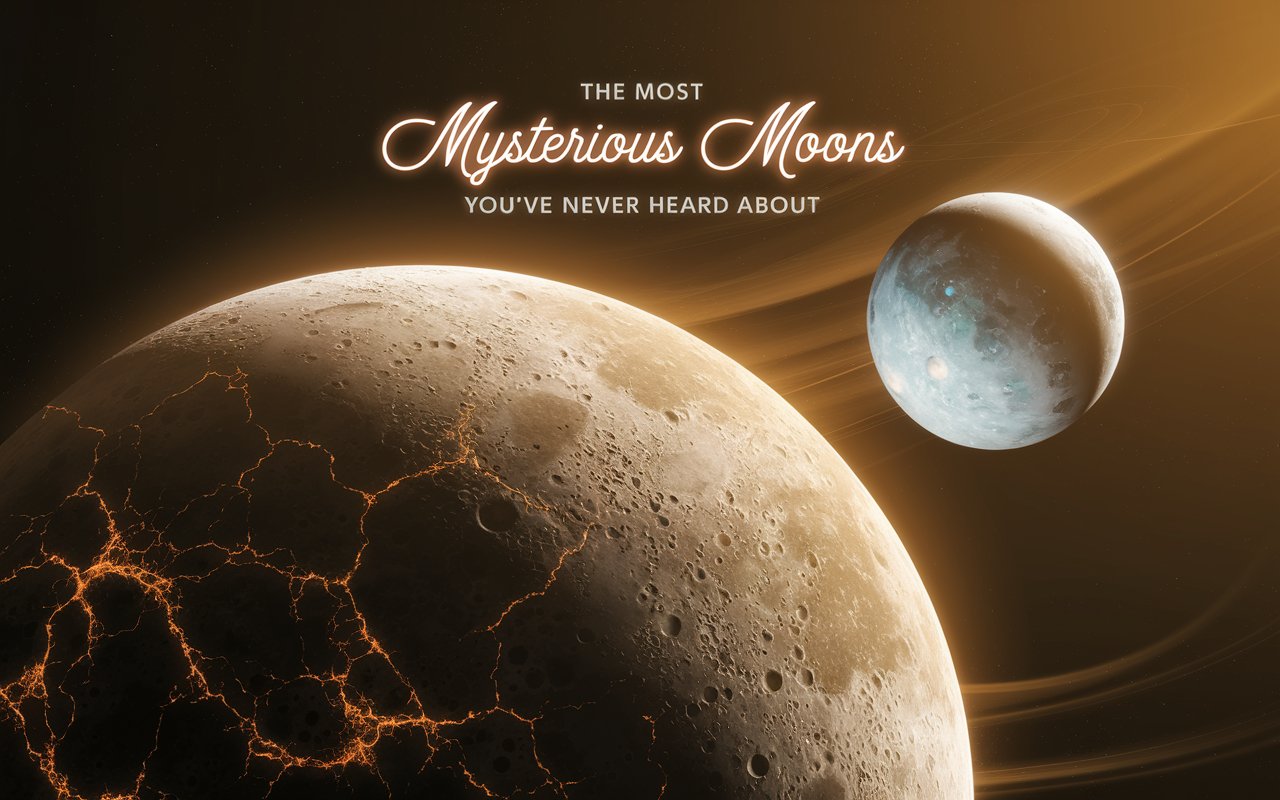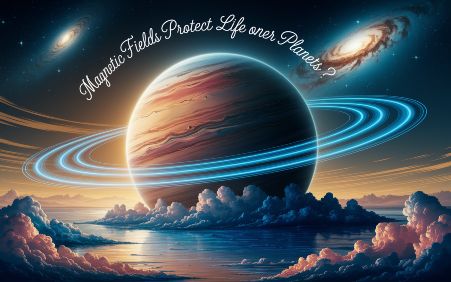Titan shows one of the most fascinating environments in our solar system. This moon of Saturn has rivers and lakes. But unlike Earth its lakes are filled with methane not water. Scientists have studied Titan’s methane cycle to look for signs of life. Some suggest this cycle could support life unlike any seen before. Others warn it may just mimic biology. We ask the question. Is Titan’s methane cycle a sign of possible life?
What Makes Titan Unique?
Titan is the largest moon of Saturn. It holds a thick atmosphere. It is the only moon with clouds and weather. The atmosphere has nitrogen and methane. That makes Titan’s methane cycle important. This cycle mimics Earth’s water cycle. But it uses liquid methane. This strange cycle has sparked interest in alien life. Could Titan’s methane cycle be a sign of possible life?
Titan’s Surface and Atmosphere
The surface of Titan looks like Earth in some ways. It has rivers dunes and lakes. But the chemistry is very different. Methane takes the place of water. The air is cold and dense. Methane rains down and forms rivers. This keeps the methane cycle going. These active processes make Titan an exciting target. The methane cycle could be a sign of possible life.
How Titan’s Methane Cycle Works
Methane evaporates from lakes. It forms clouds. Then it rains. The rain fills lakes and rivers. This process forms the methane cycle. It works much like Earth’s water cycle. But with extreme cold and strange chemicals. Titan’s surface stays below minus 179 degrees Celsius. Still the cycle moves and changes. This movement raises hope. Could such a dynamic system support alien life?
Key Components of the Cycle
Methane and ethane play major roles. They shift between gas and liquid. Winds shape clouds and storms. These elements drive the methane cycle. The methane cycle shapes Titan’s surface. It may feed energy to unknown processes. Some suggest these could involve life. Could life exist without water? Could Titan’s methane cycle be a sign of possible life?
Could Titan Host Methane-Based Life?
Most Earth life uses water. But Titan lacks liquid water. So some suggest alien life could use methane. This idea changes our view of biology. Methane life would need new structures. It would need to survive extreme cold. Scientists call these creatures cryolife. They may use hydrocarbons instead of water. This makes Titan’s methane cycle very important.
Life Without Water?
Some molecules work in methane. They stay stable even in cold. This allows chemical reactions to occur. These reactions could support metabolism. Alien life could evolve in these strange ways. The methane cycle would be vital for such life. It would move chemicals and create energy. That supports the idea. Titan’s methane cycle may be a sign of possible life.
What Scientists Think
NASA and ESA have studied Titan. They used the Cassini mission and Huygens probe. These gave close views of the surface. They showed flowing rivers and vast lakes. The data showed complex weather too. Some think these findings hint at life. Others say it is all geology. But most agree the methane cycle matters. It could be a sign of possible life.
Chemical Clues in Titan’s Atmosphere
The air above Titan is full of mystery. It has methane ethane and nitrogen. Complex molecules form in the haze. Some of these resemble amino acids. These are building blocks of life. Their presence adds hope. They suggest chemical reactions are ongoing. The methane cycle supports these reactions. So again the question returns. Is Titan’s methane cycle a sign of possible life?
Strange Chemical Patterns
Some areas lose methane faster than others. Something may be using the methane. This could point to biological use. Or it could be chemistry we do not understand. The cycle might create these patterns. But it still makes Titan unique. Titan’s methane cycle could be the key. It might even support alien ecosystems.
Exploring Titan’s Methane Lakes
Titan’s lakes are vast and deep. They are made of liquid methane and ethane. They change with the seasons. They may even have waves and tides. These features mimic Earth’s oceans. But they are much colder. Probes and landers may one day dive in. They will look for chemistry or life. The lakes are central. Titan’s methane cycle fuels them. That links the cycle to the search for life.
Future Missions to Titan
NASA will launch the Dragonfly mission. This drone will fly across Titan. It will study surface chemistry. It will check for signs of biology. It will also study weather and methane movement. Dragonfly will land in dunes and icy plains. It may solve the mystery. Is Titan’s methane cycle a sign of possible life?
Comparing Titan to Earth
Earth has a water cycle. Titan has a methane cycle. Both have weather and rivers. Both have clouds and rain. These features are rare in the solar system. They may be needed for life. Titan may be Earth’s cold twin. But with very different chemistry. This makes the methane cycle vital. It offers a parallel to Earth’s life support systems.
Could Earth Life Adapt?
Earth microbes are flexible. Some live in boiling acid. Others thrive in deep ice. Could they survive in methane? Maybe not. But alien life could evolve to fit Titan. Titan’s methane cycle may support these adaptations. That makes the question more urgent. Is Titan’s methane cycle a sign of possible life?
Pros and Cons of Methane-Based Life on Titan
| Pros | Cons |
|---|---|
| Methane cycle mimics water cycle | Cold limits reaction speed |
| Complex molecules already found | No known life signs yet |
| Titan has stable weather | No liquid water present |
| Energy from chemical gradients | Harsh surface conditions |
| Rich chemical diversity | Low sunlight for photosynthesis |
The Role of Seasonal Changes
Titan has seasons like Earth. They change every few years. They affect clouds rain and lakes. These shifts show how the methane cycle behaves. They offer chances to see chemical shifts. Life may adapt to these changes. It may even thrive in the wet season. So Titan’s methane cycle becomes more than just weather. It may link directly to possible life.
Seasonal Lakes and Storms
Lakes grow in the summer. They dry in winter. Storms appear with each shift. These cycles are tracked by telescopes. They show repeating patterns. This regularity adds to the case. Titan’s methane cycle works over time. That makes it more likely to support stable systems. These could include alien life.
Why Titan Fascinates Astrobiologists
Astrobiologists seek life in many forms. They study harsh places on Earth. They search Mars and Europa. But Titan offers something rare. It has a working methane cycle. It shows surface movement. It may support new kinds of chemistry. That makes Titan key to space science. Is Titan’s methane cycle a sign of possible life? Many say yes.
Different Life Means Different Clues
Earth life uses carbon and water. Titan life might use methane and nitrogen. That means we must look for new signs. Not just oxygen or heat. But chemical shifts and energy gradients. The methane cycle could reveal these. It might even be the engine of alien biology.
The Limits of Our Knowledge
We still lack direct proof. No life has been found. Methane cycles may exist without biology. Chemistry can mimic life patterns. That keeps the question open. We need new data. We need new missions. Until then the debate continues. But Titan remains unique. Its methane cycle could be a sign of possible life.
FAQs About Titan’s Methane Cycle and Life
Q1: Could methane replace water for alien life?
Yes. Some think methane could support life in cold places like Titan. It can dissolve molecules. That may help life form.
Q2: Has any life been found on Titan?
No. No direct signs of life have been found. But chemical clues are promising. Titan’s methane cycle raises hope.
Q3: What missions are planned for Titan?
NASA plans Dragonfly. It is a drone lander. It will explore Titan and study its surface. It may find life signs.
Q4: Why is the methane cycle important?
The methane cycle shapes Titan’s weather. It creates energy flows. It moves chemicals. These actions could support alien life.
Q5: How is Titan different from Earth?
Titan is colder. It uses methane not water. Its air is thick with haze. Yet it mimics Earth’s cycle patterns.
Final Thoughts
Titan is not just another moon. It holds rivers lakes and storms. But it uses methane instead of water. This makes it unique. This makes it important. Its methane cycle could offer more than weather. It could be the sign we seek. A sign of alien biology. A clue to a second origin of life.
The question remains. Is Titan’s methane cycle a sign of possible life? Science moves forward to answer. With each storm each drop of methane rain hope grows. One day we may know for sure.





